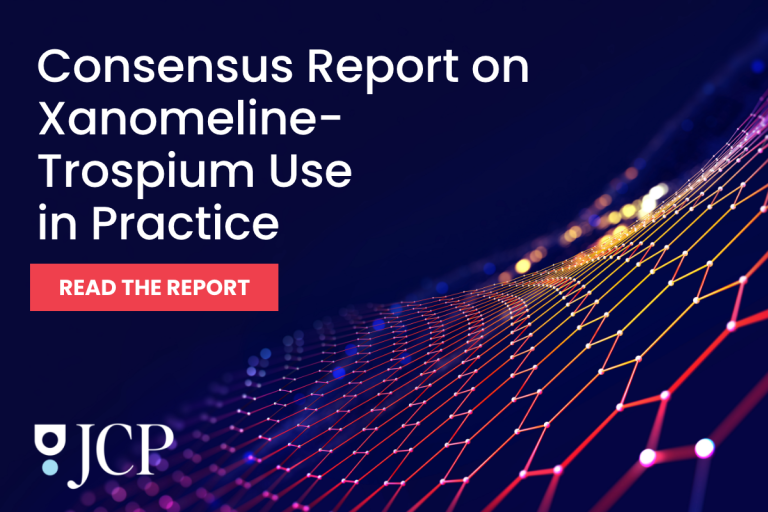To the Editor: Despite its well-established efficacy, exposure and response prevention (ERP) remains underutilized in the treatment of obsessive-compulsive disorder (OCD) during pregnancy and the postpartum (“perinatal OCD”). In addition to limited access to trained providers, discomfort and misconceptions about the treatment or its appropriateness in the perinatal population may pose barriers. Recent conversations with colleagues have indicated that some question the rationale for ERP as a stand-alone first-line monotherapy for perinatal OCD, despite it having been internationally recognized as such.1 As many perinatal patients prefer nonpharmacologic treatment, it is important to confidently offer effective psychotherapy options as appropriate due to the potential consequences for the birthing parent, infant, and family if untreated. Untreated OCD and anxiety can result in significant impairment, including disrupted caregiving and bonding,2 decreased breastfeeding,3 worsened infant temperament and sleep,4 increased amounts of missed work and financial strain,5 marital dysfunction,6,7 and higher likelihood of childhood mental health disorders.8
ERP involves guided practice approaching stimuli that provoke obsessions while refraining from compulsive rituals, conducted collaboratively with the patient and often using a gradual approach based on a personalized fear hierarchy. The goal is for the patient to learn, through direct experience, that their fears are unrealistic and that rituals are not needed to cope with obsessional distress. It is not uncommon for providers to raise concerns about using exposure-based treatments during pregnancy or the postpartum period, given that these times are often marked by increased vulnerability and stress. While caution is understandable, it should not reinforce avoidance. Rather, therapists are encouraged to strike a balance between supporting meaningful, relevant exposure work and meeting patients where they are in their capacity to tolerate the distress that such exposures may initially evoke. As guidance suggests,1 combination treatment with pharmacotherapy is an option; however, the concurrent use of benzodiazepines during ERP should be approached thoughtfully, as these medications can function as safety behaviors and potentially diminish the effectiveness of exposure therapy. Importantly, hesitation around exposures may inadvertently affirm a core mechanism of OCD: the belief that intrusive thoughts or images (eg, drowning or stabbing the baby) are dangerous and need to be avoided, leading to compulsions (eg, avoiding bathing or being with the baby) that maintain the OCD-related irrational fears. Thus, it is important for providers to feel confident in both the safety and the therapeutic value of the exposure work they are offering to patients.
Although patients (and providers) must be willing and prepared for the temporary distress associated with ERP, it remains the most effective nonpharmacologic treatment for OCD. A Delphi consensus study among international experts in perinatal OCD1 identified ERP as a first-line treatment for perinatal OCD, either alone or with selective serotonin reuptake inhibitors (SSRIs). Exposure-based cognitive behavioral therapy is considered safe, acceptable, and effective for many during the perinatal period.9,10 Competent delivery, however, requires trained providers familiar with perinatal presentations of OCD. It is also essential to assess for other psychiatric conditions (eg, postpartum psychosis, suicidality) and consult with obstetrics or pediatric colleagues if there is any question pertaining to the safety of a given exposure. Concerns about dropout may also discourage some providers, but meta-analyses show that ERP has comparable attrition to other OCD treatments.11 Virtually delivered ERP has also been effective for even severe OCD symptoms,12,13 potentially increasing access. Although further study is needed in perinatal populations, there is no evidence they respond differently.
As with any treatment, not all individuals will respond to or feel comfortable engaging in ERP. A patient’s willingness to engage in and adhere to ERP, which may be influenced by symptom severity, is an important factor in determining treatment approach, as adherence impacts treatment outcomes.14 Future research could take a precision-medicine approach in an attempt to identify which individuals are most likely to benefit from ERP, SSRIs, or their combination—considering factors such as symptom severity, OCD presentation type, comorbidities, and patient preferences. In addition to further research, addressing barriers such as stigma, limited availability, and clinician uncertainty is essential to expanding access and ensuring that more perinatal patients can benefit from ERP as an evidence-based treatment option, alone or in combination with medication.
Article Information
Published Online: November 17, 2025. https://doi.org/10.4088/JCP.25l16145
© 2025 Physicians Postgraduate Press, Inc.
J Clin Psychiatry 2026;87(1):25l16145
To Cite: Vanderkruik R, Falkenstein MJ, Abramowitz JS. Exposure therapy for perinatal OCD: navigating evidence and discomfort. J Clin Psychiatry 2026;87(1):25l16145.
Author Affiliations: Ammon-Pinizzotto Center for Women’s Mental Health, Massachusetts General Hospital, Boston, Massachusetts (Vanderkruik); Department of Psychiatry, Harvard Medical School, Boston, Massachusetts (Vanderkruik, Falkenstein); Obsessive Compulsive Disorder Institute, McLean Hospital, Belmont, Massachusetts (Falkenstein); Department of Psychology and Neuroscience, University of North Carolina at Chapel Hill, Chapel Hill, North Carolina (Abramowitz).
Corresponding Author: Rachel Vanderkruik, PhD, Massachusetts General Hospital, 185 Cambridge St, Boston, MA 02114 ([email protected]).
Relevant Financial Relationships: None.
Funding/Support: None.
References (14)

- Mulcahy M, Long C, Morrow T, et al. Consensus recommendations for the assessment and treatment of perinatal obsessive-compulsive disorder (OCD): a Delphi study. Arch Womens Ment Health. 2023;26(3):389–399. PubMed CrossRef
- Grigoriadis S, Graves L, Peer M, et al. Maternal anxiety during pregnancy and the association with adverse perinatal outcomes: systematic review and meta-analysis. J Clin Psychiatry. 2018;79(5):17r12011. PubMed CrossRef
- Challacombe FL, Salkovskis PM, Woolgar M, et al. Parenting and mother-infant interactions in the context of maternal postpartum obsessive-compulsive disorder: effects of obsessional symptoms and mood. Infant Behav Dev. 2016;44:11–20. PubMed CrossRef
- Field T. Postnatal anxiety prevalence, predictors and effects on development: a narrative review. Infant Behav Dev. 2018;51:24–32. PubMed CrossRef
- Bauer A, Knapp M, Parsonage M. Lifetime costs of perinatal anxiety and depression. J Affect Disord. 2016;192:83–90. PubMed CrossRef
- McLeod JD. Anxiety disorders and marital quality. J Abnorm Psychol. 1994;103(4):767–776. PubMed CrossRef
- Pankiewicz P, Majkowicz M, Krzykowski G. Anxiety disorders in intimate partners and the quality of their relationship. J Affect Disord. 2012;140(2):176–180. PubMed CrossRef
- Schreier A, Wittchen H-U, Höfler M, et al. Anxiety disorders in mothers and their children: prospective longitudinal community study. Br J Psychiatry. 2008;192(4):308–309. PubMed CrossRef
- Challacombe, FL, Jansen, MA Exposure therapy with patients who are pregnant. In: Smits JAJ, Jacquart J, Abramowitz J, et al (Eds.). Clinical Guide to Exposure Therapy: Beyond Phobias. Springer Nature Switzerland AG;2022:201–218.
- Challacombe FL, Tinch-Taylor R, Sabin K, et al. Exposure-based cognitive-behaviour therapy for anxiety-related disorders in pregnancy (ADEPT): results of a feasibility randomised controlled trial of time-intensive versus weekly CBT. J Affect Disord. 2024;344:414–422. PubMed CrossRef
- Ong CW, Clyde JW, Bluett EJ, et al. Dropout rates in exposure with response prevention for obsessive-compulsive disorder: what do the data really say? J Anxiety Disord. 2016;40:8–17. PubMed CrossRef
- Woodson O, Xu J, Falkenstein MJ, et al. Baseline characteristics and treatment outcomes for people accessing a virtual partial hospital program versus a residential program for obsessive-compulsive disorder. Bull Menninger Clin. 2025;89(3):175–193. PubMed CrossRef
- Feusner JD, Farrell NR, Kreyling J, et al. Online video teletherapy treatment of obsessive-compulsive disorder using exposure and response prevention: clinical outcomes from a retrospective longitudinal observational study. J Med Internet Res. 2022;24(5):e36431. PubMed CrossRef
- Simpson HB, Zuckoff AM, Maher MJ, et al. Challenges using motivational interviewing as an adjunct to exposure therapy for obsessive-compulsive disorder. Behav Res Ther. 2010;48(10):941–948. PubMed CrossRef
This PDF is free for all visitors!





